Why Does my Neck Hurt?
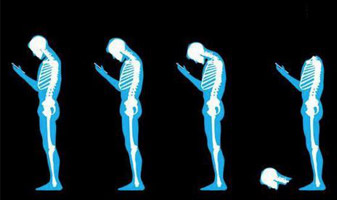
We are increasingly spending time hunched forward and leaning over our phones and laptops for hours without breaks. This hunched or kyphotic posture increases the load on the neck up to several times more than in an erect posture.
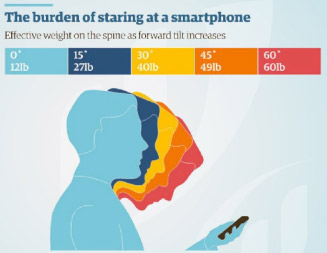
In a fast-paced world, driven by technology, upper crossed syndrome is becoming a major problem for many people. In time, this can lead to cervicogenic headache, referred pain, cervical facet joint compression and wear-and-tear damage, as well as upper crossed syndrome.
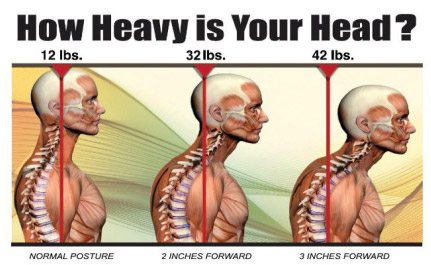
The prevalence of neck-related pain has been rapidly on the rise as tablets, laptops, and cellphones are becoming more and more present.
What is upper crossed syndrome (UCS)?
- The back muscles of the shoulders and neck (upper trapezius, levator scapula) and the muscles in the chest (pectoralis major, pectoralis minor) are overactive and tight
- Due to these overactive muscles, the muscles that counter-balance the back and chest muscles are weak (deep neck flexors, rhomboids, lower trapezius, serratus anterior)
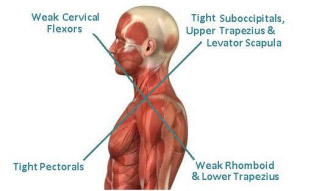
What causes UCS?
- Most often UCS is caused by prolonged kyphotic posture in which the head is forward and not squared with the shoulders
- Activities that promote this postural position include driving, reading, biking, using cellphones and laptops/computers
What are the signs and symptoms?
Signs:
- Head forward posture
- Rounded upper back (thoracic kyphosis)
- Elevated or protracted shoulder blades (scapular winging)
- Decreased mobility of the mid-back (thoracic spine)
- Reduced stability of the shoulders
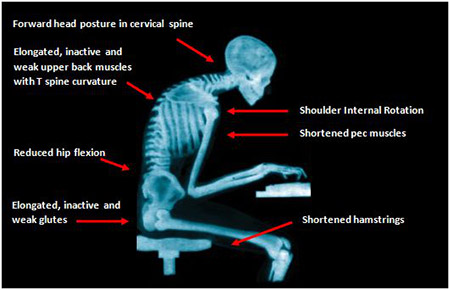
Symptoms:
- Headache
- Neck pain
- Straining of the back and weakness in the chest
- Chest pain and tightness
- Pain and tightness in the upper shoulders/back
- Sore shoulder blades
- Jaw pain
- Decreased range of motion in the neck or shoulders
- Numbness, tingling, pain in the upper arms
- Low back pain
What are problems associated with UCS?
- Migraines and tension headaches
- Reduced lung capacity and breathing difficulty
- Nerve impingement and compression
- Neck pain
- Rotator cuff injuries
- Trigger points
How do you manage UCS?
- Physical therapy and exercises are the mainstay of treatment
- Strengthening programs such as pilates
- Stretching programs such as yoga
- Massage therapy
- Acupuncture
- -Trigger point injections
- Oral pain medications
- Nonsteroidal anti-inflammatory drugs (NSAIDs) such as ibuprofen
- Tylenol
- Occasionally low dose tricyclic antidepressants such as amitriptyline
What are some home exercises for UCS?
- Begin all exercises gently and slowly build up the intensity
- There are many exercises and stretches, but here are a few that require no extra equipment such as a foam roller or yoga mat
- There are many exercises and stretches, but here are a few that require no extra equipment such as a foam roller or yoga mat
- Lie down with a thick pillow placed about a third of the way up your back, aligned with your spine
- Allow your shoulders and arms to roll out and release your legs to open naturally
- Keep your head neutral so that you don’t feel a strain or stretch
- Remain in this position for 10-15 minutes and repeat several times throughout the day
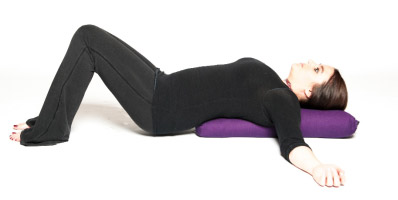
- Chin tucks
- Stand upright with your back to the wall
- Slightly tuck your chin to your chest and draw your head back to the wall
- The muscles in the front of the neck should be active while holding this position for 3 to 5 minutes
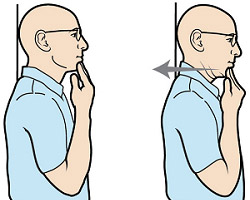
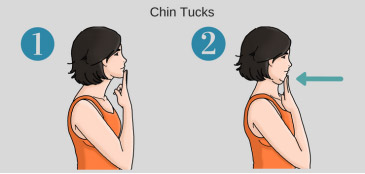
- Chest stretch
- Place the inside of your elbow against a wall
- Rotate your body away from the anchor point until you feel a stretch
- Stay in this position for 3 to 5 minutes and repeat several times throughout the day
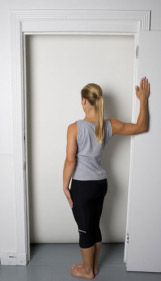
- Trapezius stretch
- Place one hand under the seat
- Roll back your shoulder on the same side into a good posture
- Gently lower the other side’s ear to the other side’s shoulder until you feel a stretch
- You can use your free hand to increase the stretch further
- Stay in this position for 3 to 5 minutes and repeat several times throughout the day
- Alternate sides
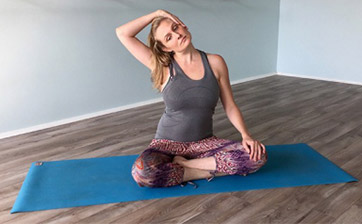
- Levator stretch
- Looking straight ahead, rotate the head by 45 degrees
- Tuck chin to chest in this position
- The free hand can be placed on the back of the head to gently pull down
- Stay in this position for 3 to 5 minutes and repeat several times throughout the day
- Alternate sides
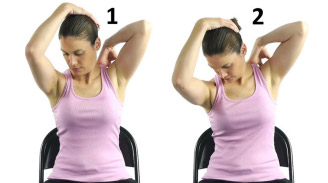
- Floor cobra
- Lie on the floor with your arms at the side of the body
- Pinch your shoulder blades together and lift your chest off the floor
- Hold for 2 seconds
- Slowly return your body to the ground, keeping your chin tucked
- Repeat
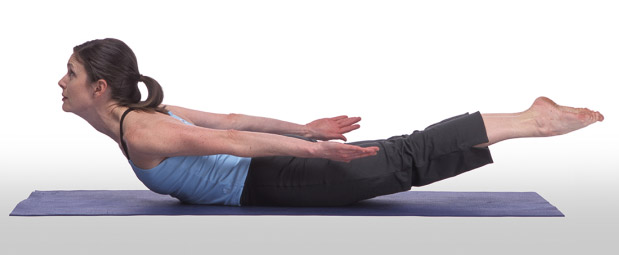
What are ways to prevent UCS?
- Ultimately, the best way to treat UCS is to avoid activities that require straining the neck/head for prolonged periods
- A few tips to prevent and treat UCS:
- Limit time on your laptop, watching TV, looking at the cellphone screen, etc.
- Take breaks every 15-20 minutes when sitting for long periods of time
- Engage in cardiovascular exercise for 30 minutes daily with low-impact activities (stationary biking, swimming, walking)
- Avoid the motions and movements that worsen symptoms
- Do stretches that target the sore muscles of the neck, upper back, shoulders, and chest
- Strengthen the front neck and lower shoulder/mid-back muscles
- oUse a single pillow that retains its shape when sleeping
- Rearrange your office so that as you are using your computer while:
- Your back is straight and shoulders are relaxed
- Elbows are close your body and bent at 90-120 degrees
- Your hip is bent at 90-120 degrees
- Backrest or lumbar support is supporting your low back at belt level
- Feet are flat on the ground
- The monitor is roughly an arm’s length away
- The top of the monitor is at eye level or just below and the monitor can tilt
- There is minimal bending of the wrist when typing or using the mouse
- Use a headset for long telephone calls
- oIf you would like to use a standing desk, refer to my blog post called “Standing desks: Are they worth the hype?” on June 25, 2019
Singh Snapshot:
- Prolonged and repetitive time in a kyphotic posture can lead to neck and upper back pain as well as upper crossed syndrome
- UCS can lead to many other problems including headaches and trigger points
- The mainstay of management is exercising, stretching, and postural changes
- Make sure to give yourself a break every 15-20 minutes from sitting at the computer
- Modify your work environment/station to decrease the chance of developing UCS
- Through a few simple measures, you can remain productive while preventing head, neck, and mid to upper back pain!
Acknowledgment
Daniel Oh, MD
PGY-3
Department of Physical Medicine & Rehabilitation
NewYork-Presbyterian
Columbia & Cornel



Leave a Reply